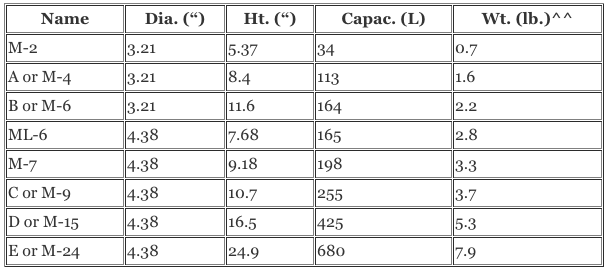Copy link
Cylinder content: weight vs. pressure
Last updated: 03/04/2015
Cylinders stored on the back of anesthesia machines are E cylinders. The height of an E cylinder is 24.9 inches, the diameter of the base is 4.38 inches, and the empty weight is 5.90 kg. Both air and oxygen are stored as compressed gasses, and therefore the volume can be calculated if the pressure in the cylinder is known. In contrast, nitrous oxide is stored as both liquid and compressed gas. As vaporized nitrous leaves the cylinder, more nitrous is vaporized. Therefore, the pressure in the cylinder remains the same as long as there is any nitrous remaining in the cylinder. When the pressure begins to decrease, approximately 400 L of nitrous remain in the cylinder.
Characteristics of Compressed Gases stored in E sized Cylinders (see image 1)
There are many other sizes of oxygen cylinders available for medical use (see image 2)
^Specifications vary slightly among manufacturers ^^Empty weight–without valve or oxygen
There are two classifications used. Cylinders may be labeled A-E (from smallest to largest), or may be labeled with an alpha-numeric designation (m for medical, followed by a number denoting the number of cubic feet of compressed gas contained in a cylinder). Larger cylinder (such as those that supply building supply) may be very large, but are still labeled in the same manner (H-cylinder is the most common). To convert cubic feet to liters, multiply by 28.33.

Other References
- Table: Catalina Cylinders Link
Copyright Information

This work is licensed under a Creative Commons Attribution-NonCommercial-NoDerivatives 4.0 International License.